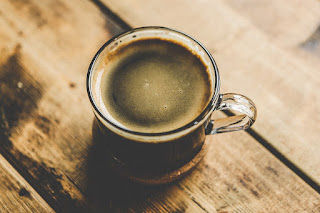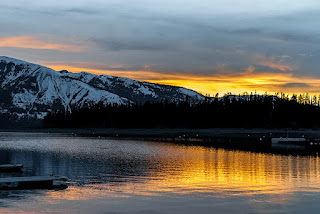Wikipedia Trails: From Biryani to Gaye Halud
I'm not going to lie, this is probably going to be one of my favorite assignments throughout the semester. I do this on my own when I'm curious about a subject. I google it and then two hours later, I know the most random facts! So when I saw this as an option, I knew it would be something enjoyable.
This week we brainstormed about different storybook ideas. The one that caught my attention the most, was a storybook I saw about food. So that's where I started this week. One of my favorite Indian dishes is Chicken Biryani. It is a savory, and sometimes spicy, rice and meat dish. It is filled with a ton of traditional Indian spices. This is the link on Wikipedia that I used to learn more about the dish: Biryani. What I didn't know is that there are soooooo many versions of the dish. I knew there were a couple of different varieties depending on the ingredients used, but I did not know that it was then divided into region: both inside and outside India! It lists 24 different regions that this dish is made and how they are unique to that area. I don't know if I have ever seen a dish with some many variations. I want to try them all!!!
Title: Chicken Biryani
Source: Wikimedia
If you want to see someone made this dish, I highly recommend watching this video: Chicken Biryani. This channel is called Grandpa Kitchen. It's a Grandpa that lives in India that cooks for orphans in his local village. My family LOVES watching his videos. They are always upbeat and he is just the cutest thing! His food also looks incredible, even though he cooks it outside. If you have a few hours to kill, I highly recommend watching his stuff. Or if you need a pick me up, just watch one 15-minute clip and you'll feel better.
The link I clicked on next was Saffron. This is the page it took me to: Saffron. This is a spice that has always intrigued me. It can be used in Biryani, but only in expensive versions of it. Saffron is the most expensive spice by volume in the world. What I learned about it through this page is that 90% of it's production is in Iran. I didn't know they had such a monopoly on the growing and cultivating of it. I did know that it had to be in hot dry temperatures for it to be successful to grow, but I would have thought there would have been more places on the planet that could emulate these conditions. I have had the pleasure of having saffron on a few occasions and the thing I like most about it is the rich, vibrant yellow-orange color it adds to the dish. There is just something so satisfying about saffron rice in a Paella. Another thing I learned about this spice is that they grade the quality of each type. And it is very technical. They even analyze the chemical makeup of the plant to determine it's worth. The picture I included is of the whole flower. I think the purple petal are beautiful. However, the only part of the plant that is used is the burnt orange stamen in the middle. The tiniest part of the flower is what cost the most money!
Title: Saffron
Source: Wikipedia
The next link that I clicked on was Turmeric. I know this is another spice, but I found it interesting these two were compared on the saffron page. Turmeric also has a beautiful yellow-orange hue to it that is often used to die fabric naturally. On the saffron page, it stated that lower class people often used turmeric to die things instead of saffron because they couldn't afford the saffron. Now days, it seems that this spice is super trendy, but with good reason. There are so so so many different uses for this amazing spice! One use that I have found recently, other than seasoning dishes, is to include it in protein shakes. Taking a little bit each day helps with inflammation in the joints. I have been going to the gym consistently for several months now and it does help with soreness the next day. I also make a paste with turmeric and coconut oil and honey and use it on my face. It helps with redness and puffiness. When you get old and you're tired all the time, you're willing to try any weird combination to reduce these things. It is like magic! Although it doesn't smell great, it does help with inflammation on my face. There are so many other uses for this amazing spice that are too long to list.
One thing that I learned that was new about this is how it looks. I had no idea that it has a flower at the top of what looks like a pineapple top or an artichoke of sorts. I have only seen it in it's yellow powder form. This is after it's dried and crushed up. I find it fascinating that what looks like this:
Turmeric Flower
Source: Wikipedia
Then turns into this:
Turmeric Powder
Source: Wikipedia
The last link I clicked on was that of Gaye Halud. This was a completely new topic for me and something I have never heard of. However, after looking more into it, this is part of a traditional wedding ceremony that uses turmeric. It is now most used in Bengal weddings, but "it originates from the Hindu wedding religious ceremony where Lord Shiva and his bride Sati were applied with Haldi to cool the couple and make them look even more beautiful." I thought this was interested because it related back to our class and what we are studying. So in essence, but Wikipedia trails assignment has come full circle!
Below is a picture of a woman having a turmeric paste applied to her forehead before her wedding ceremony.
Gaye Halud
Source: Wikipedia
I think this assignment was really fun and I'll look forward to doing these each week!








Comments
Post a Comment